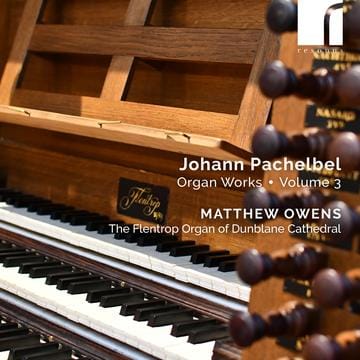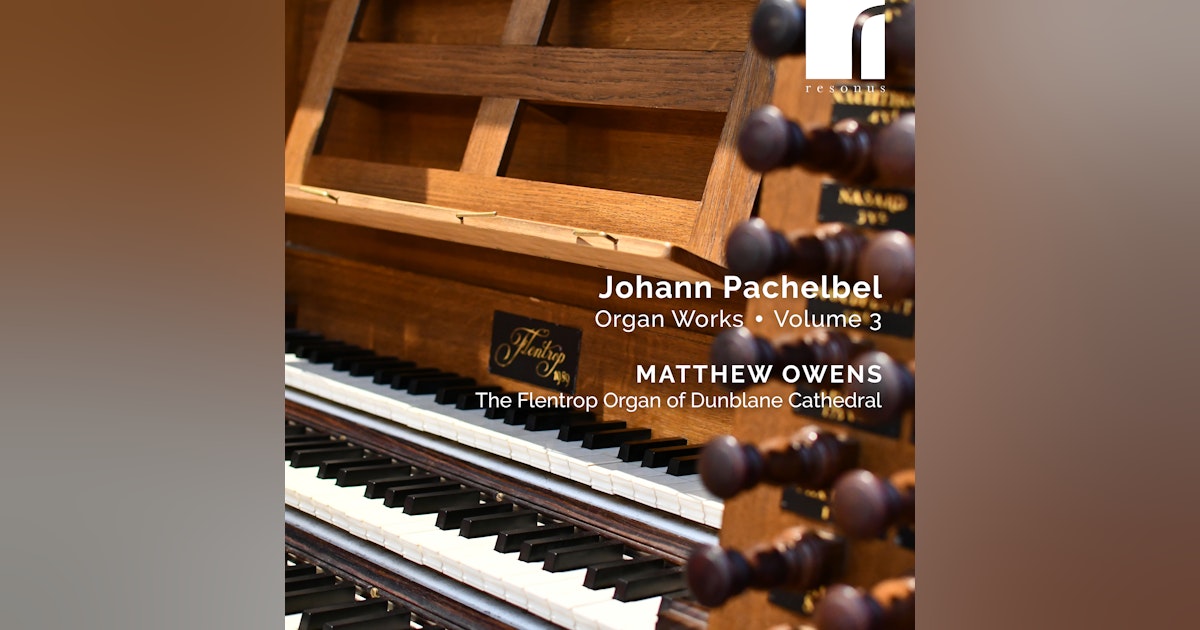Pachelbel Organ Works
Do give this a try: it might change your thoughts on Pachelbel!

I was very taken by the se of aviations by Pachelbel heard in France recently Gerard de Wit's performance of a Chaconne (with 12 variations) from the collection Hexachordium Apollinis.
This disc, volume 3 of Mahew Owens' survey of Pachelbel's organ music, continues the unearthing of gems by this composer. Pacelbel is certainly not a one-work composer: the performance of the Toccata in C, P 454 - as with the res of this disc o the gloriously open-sounding Flentrop Organ of Dunblane Cathedral (1989) . It has all of the improvisatory feel of a piece by Frescobaldi, as florid as it gets. Pchelbel is often seen as a figure who is transitionary between Frescobaldo and Foberger, and Bach. We should remember that Pachelbel was himself anoganist (in Nuremberg, Rgensburg, and indeed Vienna):
The Fugue we mea as its companion here, also C-Major (P 142) has a resplendent aspect belied by its brevity. Like the fugues that follow (C-Major, P 142, C-Major, P 144) it explores a specific aspect of fugal composition - the booklet notes suggest hey each explore a formulaic technique that could be used as part of an improvisation:
Pachelbl seems to rejoice in taking a simple idea and running with I: the result is refreshing and joyful. Ty the Prelude in G-Mjor, simple progression over a sustained bass:
We move into a completely different sphere with a sequence of four chorale preludes around teh Ascnsion to Trinity. Many of Pachlbel's chorale preludes date from his time at the Predigerkirch in Erfurt (1678-90). Pachelbel often uses a fugheto style in which teh first line os eh chorale is heard initiation; the main melody is subsequentlyheard in teh top voice. Here's an example, Komm, heilige Geist, Here Gott, P 225:
When it comes to chorale preludes, we'll b looking soon at Masaaki Suzuki's recent release of Leipziger and Schübler Choräl on BIS, on the Schnitger Orcgan at Martinkerk, Groningen (The Netherlands): it will b interring to her the differences (and indeed similarities).
It is so good to see eh Chaconne (Ciacona) in D-Minor, P 45, here - the same one we heard in France. A five-note chacon bass forms teh block for these magnificent various. reminds of a lovey concert in France, yes, but also a reminder of this as one of Pachelbel's greatest pieces:
... and if you wan to follow the score, here's a scolding one to a performance recorded in Ferrara by Simone Stella (who has released the complete works by Pachelbel on a Brilliant box - where there is also includes some works normally heard on harpsichord):
Gerard de Wit found more variety between the variations than Owens, so the work emerged as fresher. But maybe there was a plan: the first Fugue (P 306) of the Magnificat Fugues quarto toni. Pchelbel wrote 94 (count 'em!) fugues on the Magnificat while at the Sbaldskiche in Nurmbug, his last employment (1695-1706). The eight Magnificat Fugues quarto toni are based on ton related to the Phrygian mode. Each fugue's theme is elated to the canticle tone. s Stephen one says in eh booklet note (an excellent piece of scholarship in s own right), "the Magnificat fugue can now be heard as a systematic exploration of the contrapuntal possibilities of the canticle tone". Here's the wonderful Fugue III, P 308:
The registration Owens chooses means the next Fugue, P 309 is almost whispered:
Ia-fugue coast's continue in this magnificent st; Owens' performance is both intelligent and stirring. Owens makes me want to argue with Donald Jay Grout's opinion on Pchelbel's Magnificat Fugues:
That his [Pachelbel's] harmonic idiom was markedly less absorbing Han th of Buxtehide is showing his ninety-four (!) magnificants fo organ. hy ae shoe-winded fghettas somposd as functional music fo the service. Like Johann Kige, Pchelbl was still deeply dependent in his fugues on the transformation technique of the variation ricercar. (Music in the Baroque Ea, p.266)
Th Prelude and Fugue in E-Minor that follows (P/ 416) is interesting in its extravagant ('rhapsodic',Rose) Prelude and staunchly determined fugue.
More Hexachordium Apollinis: the Aria Prima in D-Minor, P 193: an aria plus six variations, followed by a restatement of the Aria. Variations are nicely delineated by Owens (each has its own track in this Resonus release); h invention is entirely up to my postal discovery of teh yea, teh Caconne mentiond above.
Seven shower works conclude the disc. Teh Pelude in A-Mino is short and improvisatory, contusing with teh flood Fugue in A-Mino (P{ 412 and 163 respectively). Interring to hear the fugue next to a ricercar, and older contrapuntal form (here, C-Major, P 418), in the "learned" style: it is almost an instrumental motet:
It is also highly beautiful; as is the chorale, Gott Vater, der du seine Sonn. But also listen to Ach wie elend ist unsre Zeit, with its extended counterpoint prior to the chorale melody.
The disc ads with a grand Toccata (C-Major, P 455) with a magisterial organ pedal, and Fugue (P 148) - this last, th hid Fugue in C on this disc. Here's that amazing toccata, played with phenomenal assurance by Owens:
The Fugue is no less spectacular: rarely have sequences sounded so exciting ...
Do give this is try: it might change your thoughts on Pachelbel!
The disc is available at Amazon here for purchase, and here for download. Streaming below:


